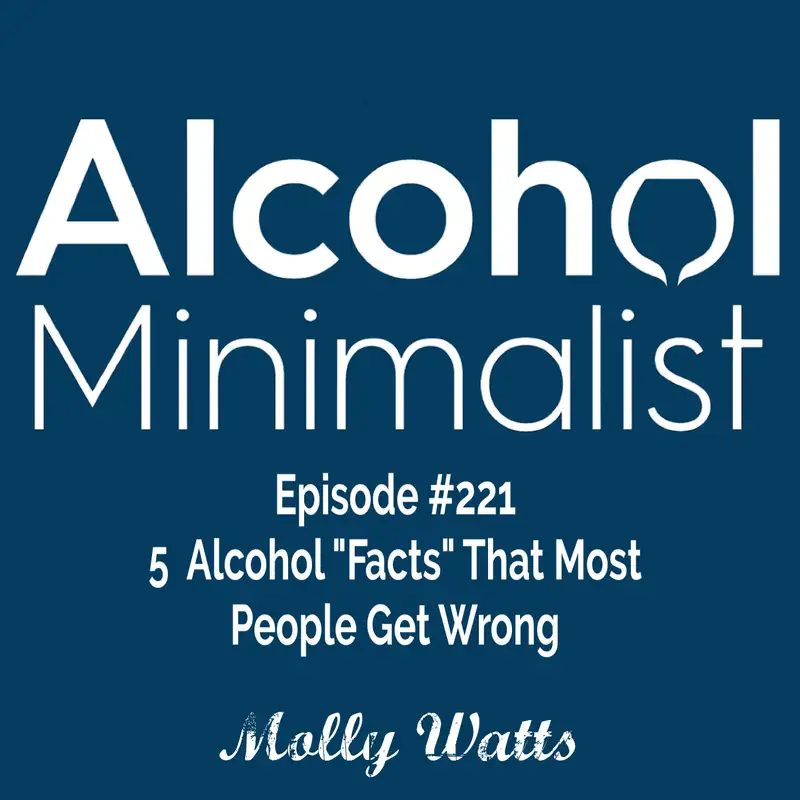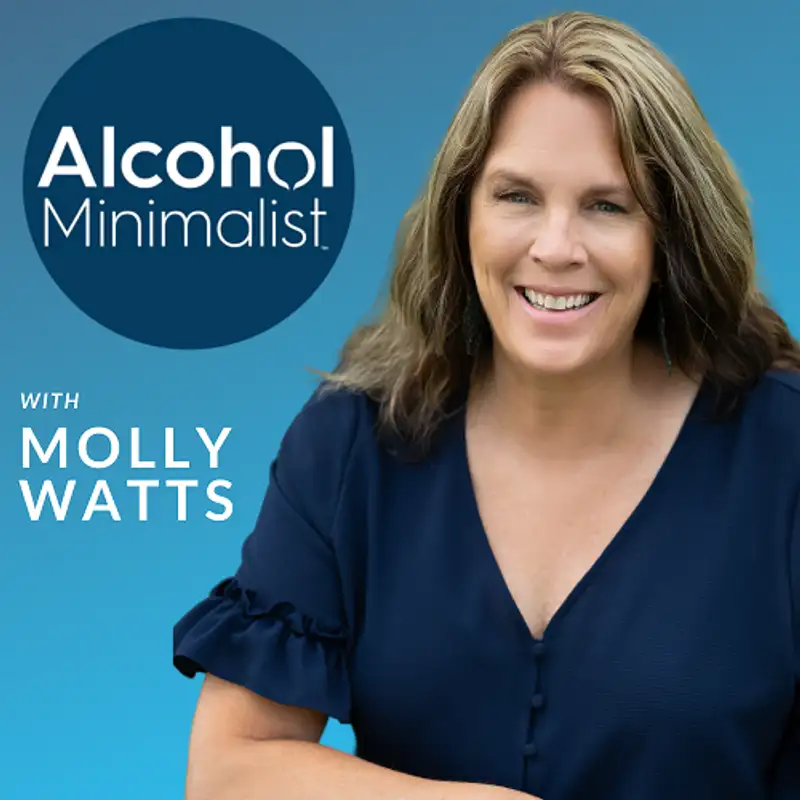5 Alcohol "Facts" That Most People Get Wrong
In this episode, Molly kicks off Alcohol Awareness Month by shining a light on five pervasive myths about alcohol that many people still believe—and why they matter. These aren’t opinion-based takes or moralistic warnings. They’re data-backed truths designed to help you reassess your relationship with alcohol through the lens of science, compassion, and practicality.
Molly revisits commonly held beliefs like “red wine is good for your heart” and the idea that there’s a universally “safe” level of drinking. She also unpacks the misconceptions surrounding alcohol dependence, the blurred line between moderate and excessive drinking, and why conscious choice—not unconscious habit—is the cornerstone of peaceful drinking.
If you’re someone who’s been “justifying” your nightly pour with old headlines or fuzzy statistics, this episode is your call to reframe, recalibrate, and realign your drinking decisions with facts—not feelings.
What You’ll Learn in This Episode:
- The truth behind the red wine “heart health” narrative
- Why “moderate” drinking might not be as safe as you think
- What the data says about alcohol and disease risk
- The reality that 9 out of 10 excessive drinkers are not alcohol dependent
- Why the language we use around alcohol can keep us stuck
- How science supports self-awareness over abstinence mandates
Key Quote:
"It’s not about shame or absolutes. It’s about awareness, choice, and a willingness to meet yourself where you are—without pretending alcohol is something it’s not." —Molly Watts
"It’s not about shame or absolutes. It’s about awareness, choice, and a willingness to meet yourself where you are—without pretending alcohol is something it’s not." —Molly Watts
Mentioned in This Episode:
- Episode 111: Global Burden of Disease
- Episode 31: Using Science to Guide Your Alcohol Decisions
- Alcohol Truths 2023 (Free eBook)
- Breaking the Bottle Legacy (Book)
Take It Further:
→ Download the Alcohol Core Beliefs guide to uncover the unconscious thoughts keeping your drinking stuck.
→ For deeper change, explore the Making Peace with Alcohol 12-month coaching group program.
→ For deeper change, explore the Making Peace with Alcohol 12-month coaching group program.
Let’s Connect:
Website: www.mollywatts.com
Instagram: @alcoholminimalist
Facebook: Join the Alcohol Minimalists Group
Low risk drinking guidelines from the NIAAA:
Website: www.mollywatts.com
Instagram: @alcoholminimalist
Facebook: Join the Alcohol Minimalists Group
Low risk drinking guidelines from the NIAAA:
Healthy men under 65:
No more than 4 drinks in one day and no more than 14 drinks per week.
Healthy women (all ages) and healthy men 65 and older:
No more than 3 drinks in one day and no more than 7 drinks per week.
No more than 3 drinks in one day and no more than 7 drinks per week.
One drink is defined as 12 ounces of beer, 5 ounces of wine, or 1.5 ounces of 80-proof liquor. So remember that a mixed drink or full glass of wine are probably more than one drink.
Abstinence from alcohol
Abstinence from alcohol is the best choice for people who take medication(s) that interact with alcohol, have health conditions that could be exacerbated by alcohol (e.g. liver disease), are pregnant or may become pregnant or have had a problem with alcohol or another substance in the past.
Abstinence from alcohol is the best choice for people who take medication(s) that interact with alcohol, have health conditions that could be exacerbated by alcohol (e.g. liver disease), are pregnant or may become pregnant or have had a problem with alcohol or another substance in the past.
Benefits of “low-risk” drinking
Following these guidelines reduces the risk of health problems such as cancer, liver disease, reduced immunity, ulcers, sleep problems, complications of existing conditions, and more. It also reduces the risk of depression, social problems, and difficulties at school or work.
Following these guidelines reduces the risk of health problems such as cancer, liver disease, reduced immunity, ulcers, sleep problems, complications of existing conditions, and more. It also reduces the risk of depression, social problems, and difficulties at school or work.

